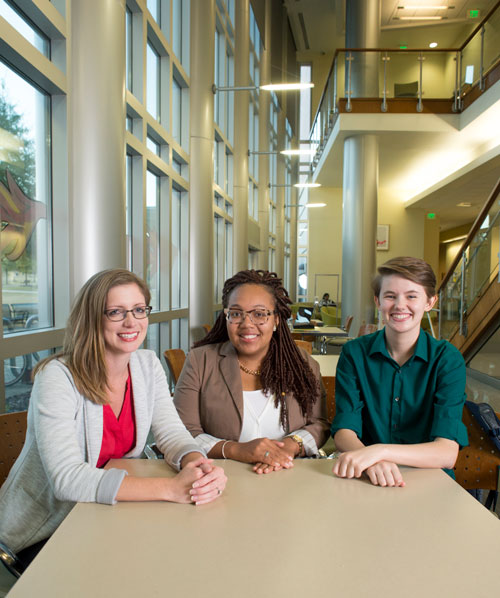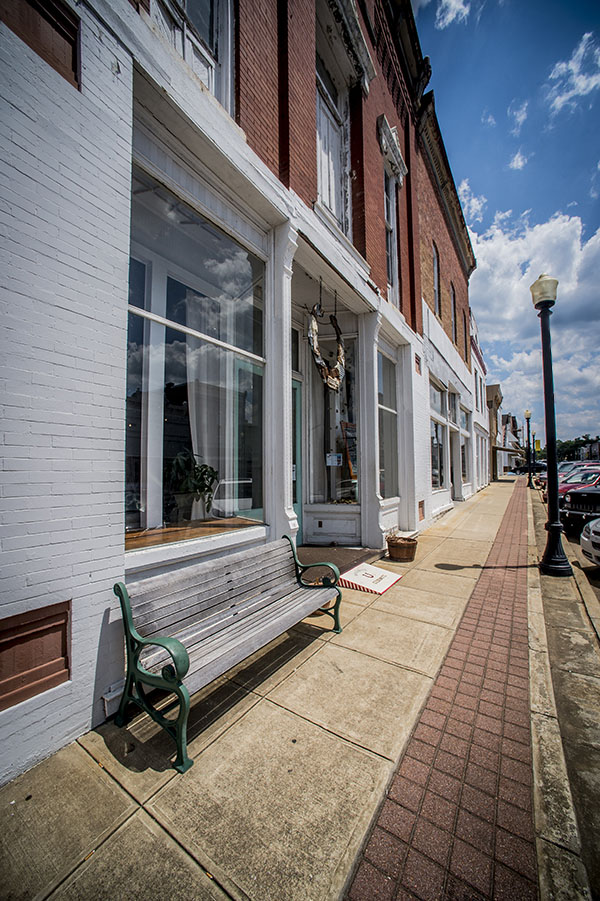
By UAB Magazine

The difference between rich and poor isn’t always measured in money. A couple of decades ago, researchers from Kansas and Alaska found that, by age four, children in high-income families had been exposed to approximately 30 million more words than children living in poverty. As those children grew and started school, the researchers saw that the gap persisted in comparisons of vocabulary, language development, and reading comprehension.
“Children don’t come into schools as a blank slate,” explains Ashley Floyd Kuntz, Ph.D., assistant professor in the UAB School of Education Department of Human Studies and UAB Honors College director of honors administration, strategic initiatives, and fellowships. “Particularly in inner city and rural areas with a lot of poverty, parent education may be low, and the kids also may not get the health care and nutrition they need. Kids come into the classroom affected by these life factors, and we can’t expect schools to fix it all.”
Indeed, there are no easy answers to questions about inequality in education — or in the UAB Honors College freshman seminar that Kuntz teaches, titled “Justice for All? Education and Opportunity in America.” Discussions highlight the achievement gaps among children from different socioeconomic and racial backgrounds, the potential causes, and public and private efforts to close them. Later, students discover the lifelong effects of a subpar education—on earning potential, quality of life, and even health — and how those can linger into the next generation.
Comparing notes
A curious thing happens during the semester-long seminar, Kuntz says. Students begin unraveling their own educations, sharing experiences that they see in a different light.
Ayanna Day says that as an African American growing up in Brandon, Mississippi, she missed out on opportunities that white students take for granted. “Often I felt that I wasn’t seen as being as smart as the white students,” says Day, a biomedical sciences major. “In this seminar, I’ve seen how many other students go through this. It’s a common stigma with black students everywhere.” In high school, she felt little encouragement to apply to a four-year university and credits UAB for inviting her to visit and learn more about it, which made a critical difference in the path she’s charting for herself.
“I feel inspired to share what I’ve learned about the effects of environment, income, and the motivation level of students on school performance,” Day says.
Students like Day also compare their experiences with peers from different backgrounds. Kuntz says students who attended International Baccalaureate (IB) schools bring a unique perspective. These schools with rigorous academics often are housed within larger public schools, and the side-by-side comparison of the programs can be stark. “Students talk about IB classes that had just 15 or so students and offered tons of academic enrichment activities,” Kuntz says. “And then they would go to the cafeteria for lunch and be surrounded by students with far fewer resources. One of my students said, ‘It always struck me as weird, because I needed less, and I knew these kids needed more.’”
Reaching out to Greensboro

The freshmen in Kuntz’s seminar are eager to do something — anything — to help bridge the educational divide. In fact, many students chose the course for its service-learning component, in which they tutor elementary school children in Greensboro, Alabama, via the Internet.
Project Horseshoe Farm, a nonprofit service organization in Greensboro with programs designed to improve the quality of life of vulnerable residents of all ages, organizes the e-tutoring in math and reading. Josh Oriez, a second-year fellow there, emphasizes the far-reaching impact of working with children. “We do a lot of great work with adults, which is a core part of our mission,” Oriez explains. “But if we’re able to get our kids where they need to go in the little ways that we can, then maybe they won’t need us when they’re in their 30s and 40s.”
On top of tutoring, the UAB collaboration benefits local kids by fostering interactions with positive role models, Oriez adds. “Our students speaking with college students is going to have an impact on their self-efficacy and their chances of applying to college,” he says. “Not every student needs to go to college, but all are being encouraged to think about their future when they work with their remote tutors. We hope they will see that college is an option if they are willing to work hard.”
Day, who tutors a third grader, says that talking with him about his future has made the experience even more meaningful. “That has been interesting, because I didn’t expect to form a relationship with my student,” she says. During some semesters, Kuntz and her students have met the children they have tutored, either in Greensboro or Birmingham, and it’s always a special moment, Kuntz says.
Segregation redux
Still, the seminar’s subject matter remains challenging, and the factors contributing to disparities in America’s public schools can seem stubbornly intractable. One unit focuses on resegregation and includes a study of schools in Tuscaloosa. In a 2014 article from The Atlantic, journalist Nikole Hannah-Jones writes, “In Tuscaloosa today, nearly one in three black students attends a school that looks as if Brown v. Board of Education never happened.”
Anna Elam, a freshman neuroscience major from Jacksonville, Alabama, remembers another stark example. “We listened to a podcast about a school that had been failing for 15 years, so its students had a chance to go to a wealthier, predominantly white suburban school. Then the parents from that school said, ‘They’re going to bring violence and drugs and low test scores!’ That’s completely inaccurate. I tried to understand the parents’ perspective, because they want their kids to go to the best school, but integrated schools work. The same kids who would go to college still go to college, yet it also brings up the high-poverty students.”
Though Kuntz shares her students’ frustration, her ultimate goal through the seminar and tutoring initiative is to empower young people to become part of the solution. That might mean participating on local school boards, volunteering with schools, working to shape public policy, or voting for people to enact better policies, she says.
“Because this is UAB, many of these students want to go into health care,” Kuntz adds, “so they also can consider how nutritional programs, vaccinations, and health clinics impact kids’ ability to go into a classroom and learn.
“We all can play a role,” she says. “We all can do something to make a difference.”




